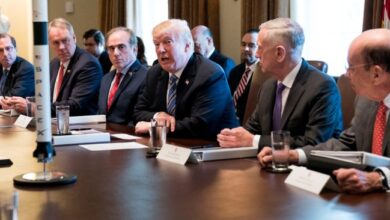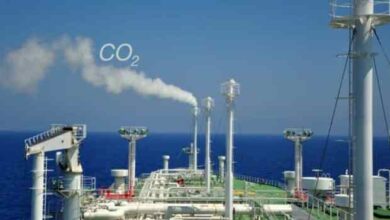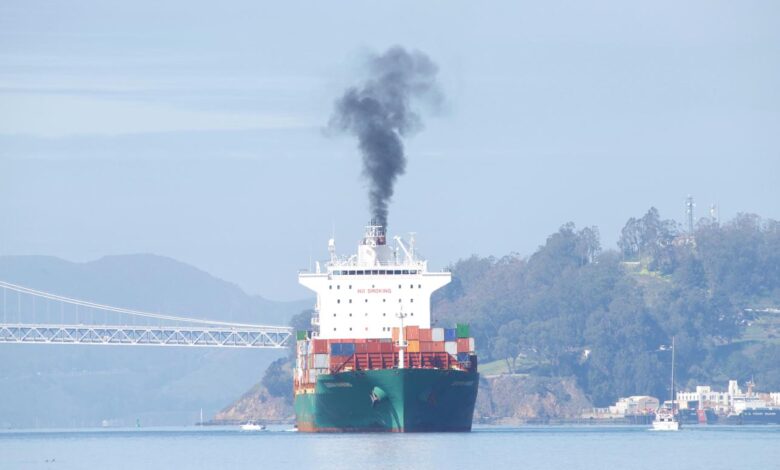
Tariffs trade tensions climate action are intricately linked, creating a complex web of global challenges. From historical trade wars to modern-day climate concerns, this discussion delves into the interconnectedness of these issues. We’ll explore how tariffs can both incentivize and hinder environmentally friendly practices, examine the conflicts between trade agreements and climate goals, and investigate potential strategies for global cooperation on both fronts.
The economic impacts of tariffs on various sectors, like manufacturing and agriculture, will be analyzed. Different types of tariffs, from import to protective tariffs, will be compared. We’ll also examine the role of international organizations like the WTO in managing these disputes, and how trade policies influence international cooperation on climate action. The discussion will cover case studies to illustrate real-world examples and consider future trends in global trade and climate action, including the impact of technology and consumer behavior.
Interconnectedness of Tariffs and Trade Tensions
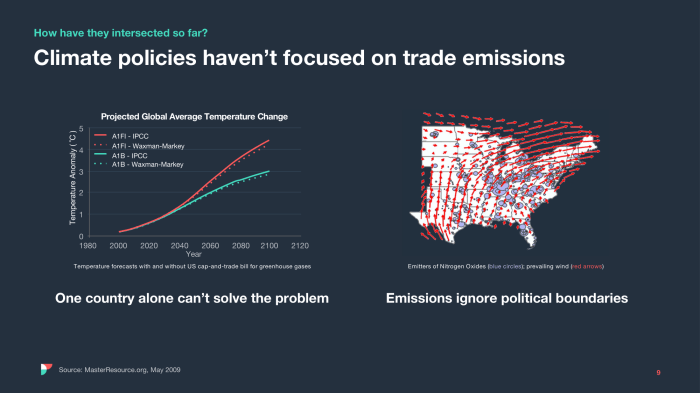
A history of global trade is often punctuated by periods of tension and conflict, with tariffs frequently playing a central role. From the Smoot-Hawley Tariff Act of the 1930s to the more recent trade wars between the US and China, the impact of tariffs on international commerce and global economies is undeniable. Understanding the complexities of tariffs and trade tensions is crucial for comprehending the interconnected nature of the global economy.The imposition of tariffs, often intended to protect domestic industries, can have profound and often unintended consequences for both domestic and foreign economies.
These consequences, ranging from stifled economic growth to increased consumer prices, highlight the delicate balance between national interests and global trade.
Historical Overview of Trade Tensions and Tariffs
The history of trade tensions is long and complex. From the protectionist measures of the early 20th century to the modern-day trade disputes, the use of tariffs has been a recurring theme in international relations. The Smoot-Hawley Tariff Act of 1930, for example, significantly raised tariffs on a wide range of imported goods, contributing to the contraction of global trade and the deepening of the Great Depression.
More recently, the trade wars between the US and China, initiated in 2018, have demonstrated the potential for widespread economic disruption when major trading partners engage in retaliatory tariff actions.
Economic Impacts of Tariffs
Tariffs exert a multifaceted impact on economies. They influence manufacturing by altering production costs and affecting the competitiveness of domestic industries. Agriculture is also profoundly affected, as tariffs on agricultural products can impact farmers’ incomes and access to international markets. For consumers, tariffs typically lead to higher prices for imported goods, reducing their purchasing power. The ripple effects of tariffs can be seen across various sectors, demonstrating the interconnected nature of global trade.
Types of Tariffs
Tariffs are categorized into different types, each with distinct implications. Import tariffs, levied on goods entering a country, are the most common type. Export tariffs, imposed on goods leaving a country, are less common but can still have a significant impact on exporters. Protective tariffs are designed to shield domestic industries from foreign competition, often by raising the price of imported goods to make them less attractive to consumers.
Role of International Organizations in Managing Trade Disputes
International organizations like the World Trade Organization (WTO) play a crucial role in managing trade disputes. The WTO provides a framework for resolving trade disagreements through consultations and, if necessary, through dispute settlement mechanisms. This process aims to ensure that trade disputes are resolved peacefully and that trade relations are maintained.
Consequences of Trade Wars on Global GDP Growth, Tariffs trade tensions climate action
The imposition of tariffs and the resulting trade wars can have substantial negative consequences for global economic growth. These conflicts can lead to reduced investment, decreased trade volumes, and ultimately, slower economic expansion. The table below illustrates the potential consequences of trade wars on global GDP growth.
| Scenario | Impact on Global GDP Growth (Estimated) | Explanation |
|---|---|---|
| Escalating Trade War | -0.5% to -1.5% | Increased uncertainty, reduced investment, and disruption of supply chains |
| Prolonged Trade War | -1.0% to -2.5% | Reduced trade volumes, slower economic activity, and diminished consumer confidence |
| Resolution of Trade War | +0.2% to +1.0% | Return to stability, increased investment, and restored trade flows |
Tariffs and Climate Action
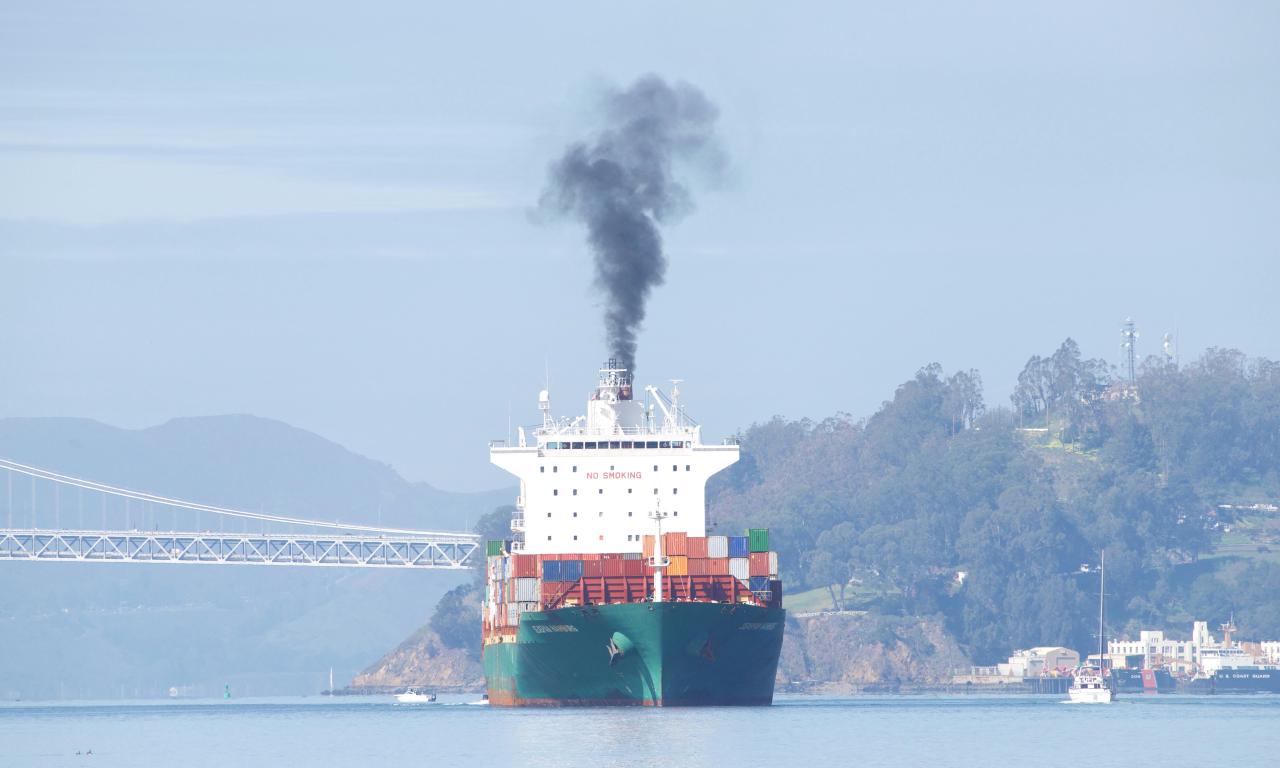
Tariffs, traditionally used for protectionist trade policies, can potentially be a powerful tool for incentivizing environmentally friendly practices. This approach aligns economic interests with environmental goals, creating a dual benefit of fostering sustainable industries and reducing harmful emissions. However, the effectiveness and fairness of such policies require careful consideration of potential negative consequences.Tariffs can be strategically designed to encourage the production and consumption of goods with lower carbon footprints, thus contributing to global climate action.
Tariffs and trade tensions are definitely a hot topic right now, and they’re often intertwined with climate action efforts. It’s fascinating how these global issues connect to everything, even something like the ending of “The Glass Dome” on Netflix. This Netflix show’s finale really made me think about the intricate ways that seemingly disparate factors can impact our future, just like the complexities of global trade and environmental policies.
Ultimately, these intricate issues are all interconnected, highlighting the urgent need for sustainable solutions.
By imposing higher tariffs on products with significant environmental impacts, governments can nudge consumers and businesses toward more sustainable alternatives. This can stimulate innovation in cleaner technologies and manufacturing processes, fostering a global transition to a low-carbon economy.
Potential for Tariffs to Incentivize Environmentally Friendly Products
Tariffs can act as a price mechanism, making environmentally damaging products less competitive. This can encourage companies to adopt cleaner production methods to reduce their carbon footprint and lower the cost of their products. By making sustainable products more affordable, tariffs can create a market demand for them, fostering growth in green industries.
How Tariffs Can Discourage High-Carbon Footprint Goods
Implementing tariffs on goods with high carbon emissions can discourage their production and consumption. For example, tariffs on products heavily reliant on fossil fuels or with extensive deforestation impacts can make them less attractive to consumers and manufacturers. This approach could stimulate the shift towards renewable energy sources and sustainable materials, reducing global emissions.
Examples of Countries Using Tariffs to Promote Renewable Energy or Sustainable Practices
Several countries have experimented with tariffs to promote renewable energy or sustainable practices, though the effectiveness and specific details of these policies vary. Some examples include tariffs on certain types of imported vehicles that lack fuel efficiency standards or restrictions on goods made with unsustainable materials, aiming to stimulate local production of greener alternatives. However, it’s important to note that the long-term success and effectiveness of these policies are not always straightforward.
Potential Negative Impacts of Tariffs on the Transition to Clean Energy
While tariffs can potentially incentivize the transition to clean energy, they can also have unintended negative consequences. For instance, tariffs might harm consumers by increasing the price of essential goods, potentially slowing the adoption of clean technologies. Furthermore, tariffs can lead to trade disputes and retaliation from other countries, hindering global cooperation on climate action. Protectionist policies can also impede the free flow of essential components for clean energy technologies, potentially hindering innovation and progress.
Comparative Environmental Impact of Goods and Corresponding Tariffs
| Good | Environmental Impact (High/Medium/Low) | Potential Tariff (High/Medium/Low) | Justification |
|---|---|---|---|
| Beef (Cattle Ranching) | High | Medium | Significant deforestation and methane emissions |
| Refined Petroleum Products | High | High | Greenhouse gas emissions from extraction and use |
| Solar Panels | Medium | Low | Manufacturing process involves energy use, but ultimately contributes to renewable energy |
| Electric Vehicles | Medium (depending on battery materials) | Low/Medium | Reduced tailpipe emissions, but battery production can have environmental impact |
| Imported Wood Products | High | Medium | Deforestation and habitat loss |
Trade Tensions and Climate Action
Navigating the intricate web of international trade while simultaneously tackling the pressing issue of climate change presents a significant challenge. Trade agreements, often designed to foster economic growth, can inadvertently create obstacles to achieving ambitious climate goals. Conversely, climate action policies can sometimes clash with the principles of free trade, creating complexities for international cooperation. This interplay requires careful consideration and a nuanced understanding of the interconnected nature of these two crucial global issues.The pursuit of sustainable development demands a holistic approach that acknowledges the symbiotic relationship between economic prosperity and environmental protection.
Trade policies must be carefully crafted to ensure that they support, rather than hinder, the transition to a low-carbon economy. This necessitates a re-evaluation of existing trade agreements and a proactive effort to integrate climate considerations into their frameworks.
Potential Conflicts Between Trade Agreements and Climate Goals
Trade agreements often prioritize economic liberalization, potentially leading to increased production and consumption, thereby contributing to carbon emissions. For instance, agreements promoting the export of energy-intensive goods can incentivize the production of these goods in countries with less stringent environmental regulations. This can exacerbate global carbon emissions if not mitigated by complementary policies. Furthermore, trade agreements sometimes conflict with climate action policies that aim to restrict certain types of imports or exports.
Role of Trade in Carbon Emissions
Trade plays a substantial role in carbon emissions. The transportation of goods across borders, the production of goods in regions with varying environmental standards, and the consumption patterns driven by trade all contribute to the global carbon footprint. International trade, particularly in energy-intensive industries like steel and cement, often leads to the outsourcing of carbon-intensive production processes to nations with less stringent environmental regulations.
Trade tariffs and escalating tensions often overshadow the crucial link between climate action and global trade. Sabrina Elba’s insightful work on climate change, particularly focusing on the Global South, highlights the disproportionate impact of environmental disasters on vulnerable communities. This crucial connection between global inequalities and climate change action, as explored by Sabrina Elba climate change global south , ultimately underscores the need for fair trade practices that support sustainable development and climate resilience, rather than exacerbating existing inequalities.
Addressing tariffs and trade tensions requires a holistic approach, acknowledging the climate crisis’s profound impact.
Influence of Trade Policies on International Climate Action
Trade policies can significantly influence international cooperation on climate action. Agreements that facilitate the exchange of environmentally friendly technologies and promote sustainable practices can foster collaboration. Conversely, trade policies that prioritize short-term economic gains over long-term sustainability can hinder the global effort to mitigate climate change.
Approaches to Integrating Climate Considerations into Trade Agreements
Various approaches are employed to integrate climate considerations into trade agreements. Some countries advocate for the inclusion of specific environmental provisions within trade agreements, such as requirements for emissions reduction or standards for sustainable production. Others favor a more flexible approach, relying on international agreements and voluntary commitments to address climate change. This spectrum of approaches reflects the ongoing debate on the optimal balance between trade liberalization and environmental protection.
Comparison of Trade Policies Impacting Climate Action Across Countries
| Country | Trade Policy | Climate Action Impact |
|---|---|---|
| United States | Historically focused on bilateral trade agreements with varying environmental provisions. Recently, there’s been an increased focus on incorporating climate considerations into trade negotiations. | Mixed impact. Past policies have contributed to some emissions, but recent shifts may lead to positive outcomes. |
| European Union | Emphasizes sustainable trade practices and has introduced environmental criteria into trade agreements. Promotes trade with countries that have similar environmental standards. | Generally positive impact, driven by a strong commitment to climate action. |
| China | Focuses on economic growth through trade, with limited explicit climate provisions in trade agreements. However, there are increasing commitments to sustainable development goals. | Complex impact. Rapid industrialization contributes to emissions, but recent initiatives show potential for improvement. |
| India | Prioritizes economic development and access to global markets. Climate considerations are increasingly being integrated into national policies, but trade-related environmental impacts are a concern. | Balancing economic needs with climate action remains a challenge. |
Global Cooperation and Tariffs: Tariffs Trade Tensions Climate Action
International cooperation on trade and climate action faces significant challenges, often stemming from differing national priorities and economic interests. Balancing the need for economic growth with environmental sustainability is a complex undertaking, requiring a nuanced approach that considers the specific circumstances of each nation. These challenges are further compounded by the inherent tensions between free trade principles and the desire to protect domestic industries and environmental standards.Successfully navigating these complexities requires a shift towards collaborative strategies that recognize the interconnectedness of trade and environmental policies.
This necessitates a more holistic understanding of the global landscape, recognizing that environmental protection and economic prosperity are not mutually exclusive goals. Instead, they can be pursued simultaneously through targeted international agreements and policies.
Challenges of International Cooperation
Harmonizing trade policies with climate action is a significant hurdle. Differing levels of economic development, varying environmental priorities, and diverse political systems create a complex landscape for negotiation and implementation. National interests often take precedence over collective action, leading to disagreements and roadblocks in achieving consensus. Enforcement mechanisms for international agreements are frequently inadequate, further hindering effective cooperation.
Successful Collaborations on Trade and Environmental Issues
Several examples showcase successful collaborations on trade and environmental issues. The Montreal Protocol, for instance, demonstrates the potential for international cooperation to address environmental concerns. It successfully phased out ozone-depleting substances, demonstrating a global commitment to environmental protection. Similarly, some trade agreements have included provisions related to environmental standards, albeit with varying degrees of success. A notable example includes the EU’s trade agreements that often include provisions for sustainable practices and environmental protection.
Role of International Organizations
International organizations, such as the WTO, UN, and specialized agencies, play a crucial role in fostering global cooperation. They provide platforms for dialogue, negotiation, and the development of shared norms and standards. These organizations can facilitate the exchange of information, technical expertise, and best practices. However, their effectiveness is often limited by the political will and commitment of member states.
Global trade tensions, tariffs, and climate action are all interconnected, like a complex puzzle. It’s easy to get bogged down in the complexities of international relations, but sometimes, the most profound insights come from looking inward. Perhaps understanding how we can better “properly grieve our bodies,” as explored in this insightful essay properly grieving our bodies essay , could offer a valuable lens for navigating these larger societal issues.
Ultimately, these external challenges require an internal understanding, before we can effectively address the interconnectedness of tariffs, trade, and climate action.
Potential Strategies for Building Consensus
Building consensus on trade and climate action requires a multifaceted approach. Strategies should focus on shared interests, transparent communication, and a commitment to equitable outcomes.
- Establish clear, measurable, and achievable targets: Setting common goals for emissions reduction and sustainable practices provides a framework for coordinated action. These targets must consider the varying capacities of different countries.
- Develop incentives and support mechanisms: Financial aid, technology transfer, and capacity building programs can encourage participation from developing countries, fostering a sense of shared responsibility.
- Promote transparency and accountability: Open communication and mechanisms for monitoring compliance are essential for building trust and ensuring that commitments are met.
- Foster public-private partnerships: Engaging businesses and civil society organizations can broaden support for climate action and sustainable trade practices.
How Trade Agreements Promote or Hinder Global Climate Initiatives
Trade agreements can either bolster or impede global climate initiatives. Agreements that include provisions for sustainable practices, environmental standards, and carbon pricing can promote climate action by incentivizing environmentally friendly production and consumption patterns. Conversely, agreements that prioritize economic growth without considering environmental implications can undermine climate initiatives by encouraging unsustainable practices. For example, agreements that permit the export of goods produced with lower environmental standards can discourage nations from implementing stricter regulations.
Case Studies of Tariffs, Trade Tensions, and Climate Action
Examining the complex interplay between trade policies, international tensions, and global climate efforts is crucial to understanding the multifaceted challenges and opportunities. Tariffs, trade disputes, and climate action often intertwine in unforeseen ways, impacting both national and global sustainability goals. This section explores specific case studies to illuminate these connections.
Tariffs and Their Impact on Climate Change Mitigation
Tariffs on imported goods can significantly impact a country’s ability to achieve climate goals. For instance, tariffs on solar panels or electric vehicle components can increase domestic production costs, potentially hindering the transition to renewable energy. A country might impose tariffs to protect its domestic industries, but this could inadvertently limit the adoption of sustainable technologies, delaying progress toward climate targets.
Furthermore, tariffs can disrupt global supply chains for environmentally friendly materials and technologies, further complicating the path to decarbonization.
Trade Tensions and Climate Action Efforts
Trade tensions, characterized by retaliatory tariffs and trade restrictions, can hinder global cooperation on climate change. When countries engage in trade disputes, the flow of critical technologies and materials needed for sustainable development can be disrupted. For example, disputes over technology transfer or carbon pricing mechanisms can undermine the shared efforts required to mitigate climate change effectively. These tensions often lead to a reduction in investment in green technologies and sustainable practices, as businesses face uncertainty and risk in the international marketplace.
Impact of Tariffs on Sustainable Technology Adoption
Tariffs on sustainable technologies, such as electric vehicles or renewable energy components, can significantly affect the cost and availability of these technologies. Higher tariffs often increase the price of imported sustainable products, potentially reducing consumer demand and slowing down the adoption rate. This can hinder the development and deployment of crucial technologies necessary for reducing greenhouse gas emissions and achieving climate goals.
For example, tariffs on wind turbine components can make them less competitive with traditional energy sources, delaying the transition to renewable energy.
Successful Integration of Climate Considerations into Trade Policies
Several countries have demonstrated successful integration of climate considerations into their trade policies. These initiatives often include provisions that incentivize the export and import of sustainable goods and technologies, while also discouraging the trade of products that contribute significantly to greenhouse gas emissions. This can be achieved through various measures, including preferential trade agreements that reward environmentally friendly practices.
Examples include the inclusion of climate-related standards in trade agreements, encouraging the adoption of sustainable technologies through preferential tariffs, and creating mechanisms for monitoring and verifying environmental compliance in traded goods.
Key Takeaways from Case Studies
| Country | Type of Tariffs | Impact on Climate Action |
|---|---|---|
| Country A (Hypothetical) | Tariffs on solar panels | Increased domestic production costs, hindered the adoption of renewable energy, delayed climate targets. |
| Country B (Hypothetical) | Retaliatory tariffs on green technologies | Disrupted the global supply chain for sustainable technologies, reduced investment in green initiatives, slowed down the adoption of sustainable practices. |
| Country C (Hypothetical) | Preferential tariffs on electric vehicles | Increased adoption of electric vehicles, stimulated the growth of the automotive industry, contributed to the reduction of greenhouse gas emissions. |
Future Trends and Implications
The interplay between global trade, climate action, and emerging technologies will significantly shape the coming years. Predicting the exact future is impossible, but analyzing potential trends provides valuable insight into the complex landscape ahead. This section delves into potential future trends, impacts of technological advancements, the role of consumer behavior, and the consequences of these interactions on international relations and global economics.Understanding these trends is crucial for policymakers, businesses, and individuals alike to adapt and navigate the evolving global environment.
This proactive approach can help mitigate potential challenges and capitalize on emerging opportunities.
Potential Future Trends in Global Trade
The global trade landscape is constantly evolving. Several key trends are expected to shape the future. These include the rise of regional trade agreements, the increasing importance of e-commerce, and the growing demand for sustainable and ethical products. The evolving global political environment will also play a crucial role in shaping future trade patterns.
- Regional Trade Blocs: Continued formation of regional trade blocs, such as the EU and ASEAN, will likely strengthen regional economic integration. This will lead to greater trade flows within these blocs, potentially impacting global trade patterns by creating regional hubs for specific industries.
- E-commerce Growth: The expansion of e-commerce will continue to transform global trade. This will necessitate adjustments in logistics, supply chains, and international regulations. Examples include the rise of cross-border online retail and the development of digital payment systems.
- Demand for Sustainable Products: Consumer demand for sustainable and ethically produced goods will intensify. This will drive businesses to adopt environmentally friendly practices, leading to innovation in sustainable production and consumption models.
- Technological Advancements: Automation, AI, and big data analytics will significantly influence global trade by optimizing logistics, improving supply chain efficiency, and enhancing transparency in trade practices.
Potential Impacts of Technological Advancements on Trade and Climate Action
Technological advancements hold significant potential to revolutionize both global trade and climate action. Automation, AI, and big data analytics will influence trade practices and logistics, potentially improving efficiency and transparency. Meanwhile, technological innovations in renewable energy and energy storage can facilitate a transition to a low-carbon economy.
- Automation and AI: Automation in manufacturing and logistics can enhance efficiency and reduce costs in global trade. AI-powered tools can also optimize supply chains, enabling businesses to respond quickly to market changes and disruptions.
- Renewable Energy Technologies: Advances in renewable energy technologies, like solar and wind power, coupled with energy storage solutions, can significantly reduce reliance on fossil fuels and transition to a low-carbon economy.
- Digitalization of Trade: The digitalization of trade documents and processes can streamline international transactions, reduce costs, and increase transparency.
Role of Consumer Behavior in Shaping Future Trade Policies
Consumer preferences and behavior are increasingly influencing trade policies. Consumers are demanding greater transparency, sustainability, and ethical practices from businesses and governments. This trend will continue to shape future trade policies, with a growing focus on sustainability and ethical sourcing.
- Demand for Transparency: Consumers are increasingly demanding greater transparency from businesses about their supply chains and production processes. This will drive companies to be more open about their practices.
- Sustainability Concerns: Environmental concerns are increasingly influencing consumer choices, prompting demand for sustainable and eco-friendly products and services.
- Ethical Sourcing: Consumers are becoming more aware of ethical sourcing issues and are demanding that products be made using ethical labor practices. This will impact trade policies in the future.
Potential Consequences of Global Trade and Climate Action in the Coming Years
The future consequences of global trade and climate action will be multifaceted and far-reaching. These consequences will impact international relations, global economics, and social well-being.
- Geopolitical Tensions: Disagreements over trade policies and climate action could escalate geopolitical tensions between nations.
- Economic Impacts: Transition to a low-carbon economy may result in economic disruption in some sectors, but new opportunities will emerge in sustainable industries.
- Social Disruptions: Economic changes associated with global trade and climate action could lead to social unrest in certain regions.
Expected Implications on International Relations and Global Economics
The interplay between global trade and climate action will significantly influence international relations and global economics. Increased cooperation on climate change will be essential for achieving sustainable development goals, while trade policies will need to adapt to the changing global landscape.
- Increased Global Cooperation: Addressing climate change and fostering sustainable trade practices will require greater international cooperation and collaboration.
- Shifting Economic Power: Countries that successfully adapt to sustainable practices and adopt cutting-edge technologies are likely to experience economic growth and become major players in the global economy.
Final Conclusion
In conclusion, tariffs trade tensions climate action are deeply intertwined. The interplay between economic interests and environmental concerns necessitates careful consideration of various factors. Addressing these challenges requires international cooperation, innovative solutions, and a clear understanding of the potential consequences of different approaches. Ultimately, finding a balance between economic growth and environmental sustainability is crucial for a healthier planet and a more prosperous future.


